The remains of the “Red Lady of Paviland” need to be returned to Wales
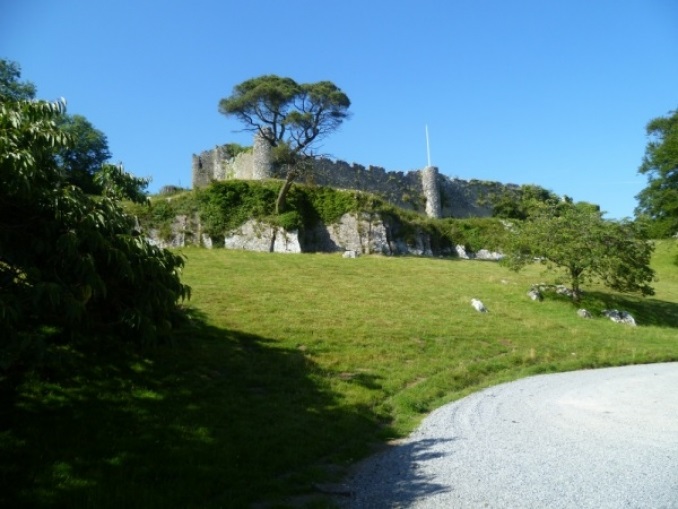
Paviland Cave is also known locally as Goat's Hole Cave. It is a limestone cave between Port Eynon (Porth Einon) and Rhossili (Rhosili), on the Gower Peninsula (Penrhyn Gŵyr) in the south of Wales (Cymru). The human remains discovered in this cave in 1823 has led it to be one of the most famous caves in the world. In 1822 Daniel Davies and the Rev John Davies explored the cave and found animal bones, including the tusk of a mammoth. A further expedition later that year, which included Mary Theresa Talbot of Penrice Castle on the Gower, found more unusual animal bones. The Talbot family had contact with geologist William Buckland, who arrived on 18 January 1823 to investigate the site. During the following week he explored the cave and made his famous discovery.
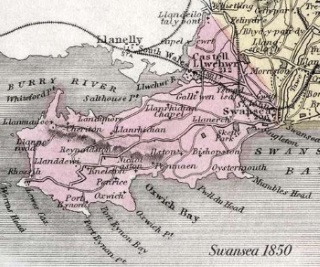
William Buckland (12 March 1784 – 14 August 1856) was a theologian who later became Dean of Westminster. He was one of the greatest geologists of his time and he was the University of Oxford's first Reader in Geology. The bones that he found in Paviland Cave were the remains of a body that had been smeared with red ochre, which is a naturally occurring iron oxide, they were buried with goods made from bone, antler and ivory rods along with a selection of periwinkle shells. It was the decorative items and perforated seashell necklaces that accompanied the body that led to William Buckland’s mistaken assumption that the remains were that of a female. He gave the find the title of "The Red Lady of Paviland." The name by which the remains continue to be known.
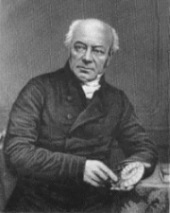
His view of the gender of the remains proved to be wrong. This was not the only mistake made at the time of the discovery. William Buckland was constrained by the religious orthodoxy of the time and the idea that no human remains could be dated earlier than the Great Flood as recorded in the Bible. Misguided by this preconception, his dating of the skeleton was drastically inaccurate. He eventually concluded that the remains were from the period of Roman intervention into Wales, which was after 48 AD. There was, of course, no radiocarbon dating in William Buckland’s day. As technology has improved over the years, the age of the bones have consistently been proven older than previously thought. The latest results show they date to 34,000 years ago.
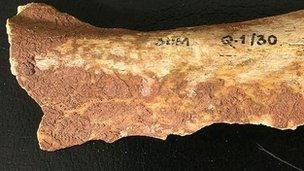
We understand now that the "Red Lady of Paviland" was in fact a tall young male. Results show him to have been a healthy person, who does not show any major signs of illness of disease. It is not known how he died, possibly an accident, but this is pure speculation. Although the cave is now on the coast, at the time the body was placed in the cave 34,000 years ago, it is estimated that it would have been located approximately between 60 and 80 miles miles inland, overlooking a plain. Bone protein analysis suggests that his diet that consisted of between 15% and 20% fish. Given the distance from the sea this points to him having been part of a semi-nomadic people. It could also be that his body was transported to its final destination as part of what is the oldest known ceremonial burial in Western Europe. So the cave could have held a particular significance at the time.
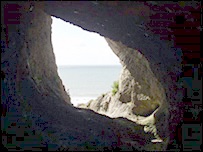
We do not know, nor is it likely that we will ever know, of the belief systems by which the people of the Upper Palaeolithic, Late Stone Age lived their lives. However, clearly there was some ceremony involved in this burial. Many think that the respect shown when interned, points to him having been a very important man amongst his people. Some of those that hold to pagan beliefs see the site of the cave as being of particular spiritual importance. There have long been calls for the return to Wales of the “Red Lady of Paviland”, one of the world's most important archaeological finds. However, it is like many treasures and artefacts from the Celtic lands that remain in collections in England. The Red Lady is kept at Oxford University Natural History Museum. Once plundered, it seems the English are very reluctant to give anything up. Swansea Museum and the National Museum at Cardiff only have plastic copies of the skeleton.

When thinking of items taken from other countries, often called to mind are the so called Elgin Marbles. The Elgin Marbles are the Parthenon Marbles, a collection of Classical Greek marble sculptures that were originally part of the temple of the Parthenon and other buildings on the Acropolis of Athens. They were removed and shipped to England, in what the poet, peer and politician Lord Byron described as an act of vandalism or looting. Although the Greeks have consistently requested their return to Greece they remain held captive in the British Museum. However, there are also many Celtic treasures held in English hands that need to be returned to their Celtic homelands. Paviland is now recognised as an archaeological site of exceptional importance. Just like the Elgin Marbles which were taken from Greece, this very important piece of history, the "Red Lady of Paviland", has been taken from the Welsh by the English. It is time for the Red Lady to be returned home to Wales.
- Welsh
- English





